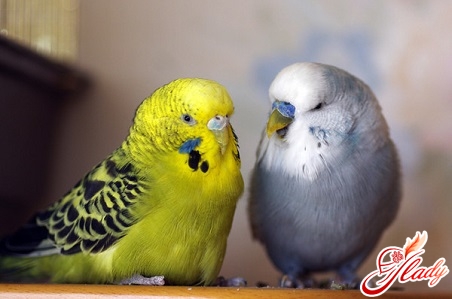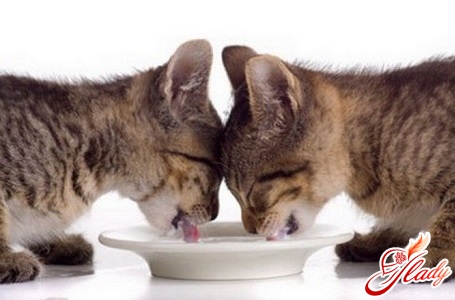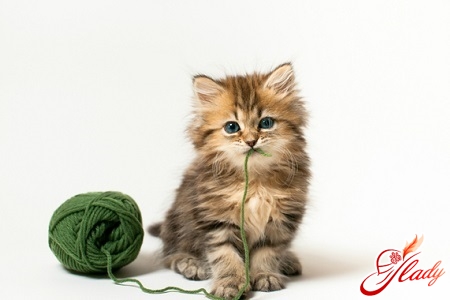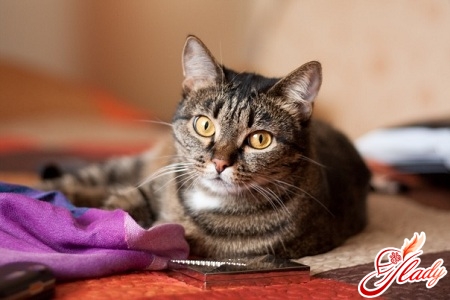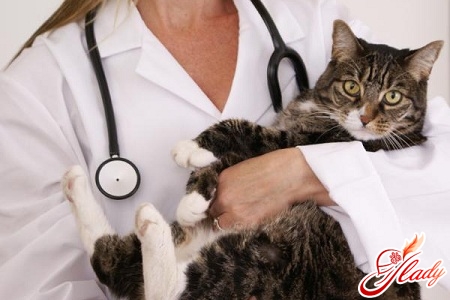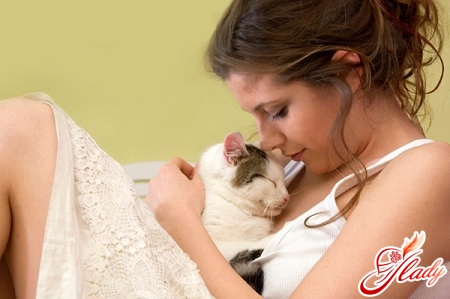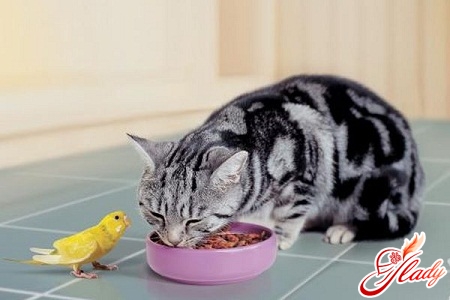 Many (unfortunately, very many)This question will cause confusion for cat owners. What do you mean, what to feed a cat? What we eat ourselves, we can feed it - it is not harmful to us. By the way, the fact that “it is not harmful to us” is also debatable. But the fact that food from our table is categorically not suitable for a cat is indisputable. Do you want to know why? Because a cat is not a person. And genetically, it is adapted to completely different food. So, in more detail about what you can feed a cat, what you can’t and why.
Many (unfortunately, very many)This question will cause confusion for cat owners. What do you mean, what to feed a cat? What we eat ourselves, we can feed it - it is not harmful to us. By the way, the fact that “it is not harmful to us” is also debatable. But the fact that food from our table is categorically not suitable for a cat is indisputable. Do you want to know why? Because a cat is not a person. And genetically, it is adapted to completely different food. So, in more detail about what you can feed a cat, what you can’t and why.
Genetic taste predilections of cats
As you know, all cats are natural-born hunters.These are predators whose main diet is meat. Large cats (lions, tigers, leopards) hunt large mammals in the wild. The smaller ancestors of the domestic cat are also hunters, but their prey is large and small rodents, birds and insects. Wild (and domestic) cats eat their prey whole, including fur, feathers, entrails and small bones. In this case, the cat's body gets not only meat, but also connective tissue, and often the contents of the stomachs of birds and rodents, consisting mainly of plant food - grain, berries, grass, fruits. In this case, the cat eats protein (meat) in its natural, raw form. And carbohydrates (cereals) are already semi-digested by the cat, from the stomach of the prey. Therefore, all domestic cats are genetically adapted to this type of food: meat, cereals, fruits (mainly root vegetables). So how can you calculate the diet of your domestic predator in accordance with this? How often and what exactly should you feed your cat so that it is not only well-fed but also healthy? There are two possible options: natural food and special (dry or wet) animal food.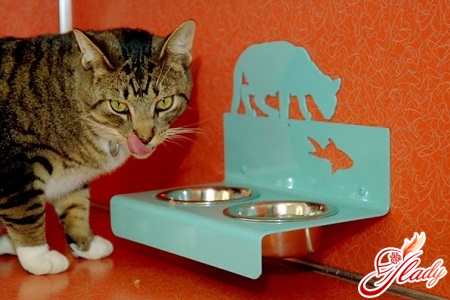
Necessary and safe natural products
Feeding natural food can be considered the mostthe best option, first of all, for a cat. However, this does not mean that natural food is food from your table. Many, many human "goodies" are harmful to cats, so you cannot feed your four-legged pets what you eat yourself. The advantages of feeding natural food are the long life expectancy of pets. The disadvantage is the difficulty in maintaining the proportions of a balanced diet. Nevertheless, it is natural products that will provide your cat with a long life and good health. You just need to know what you can feed your cat and what you can not. What foods should be included in the diet of a domestic cat? The basis of the menu for a domestic cat should be meat - beef and poultry. These sources of protein can and should be given to the cat daily. Next come carbohydrates in the form of cereals - buckwheat, oatmeal, rice, barley. And the third component of the diet is vegetables. It is best to give meat to a cat raw, or you can cook porridge on its basis. By the way, you can add raw chicken to porridge with beef broth, or vice versa - you can add pieces of raw beef to chicken broth. Raw meat can be alternated with offal, which is also given to the cat raw, but first scalded with boiling water. Vegetables are necessary for the cat for good bowel function and as a source of vitamins. If your pet likes raw carrots, beets, cucumbers and cabbage, then you do not need to interfere with this - let it eat. If the cat does not like raw vegetables, then you need to put them in porridge. In addition, you can add sprouted grains and greens to the cat's food - these products are very useful for it. It is best to sow special grass for cats in a flower pot, the seeds of which can be purchased at a flower shop and in the pet departments. However, you can add fresh greens to porridge. Fermented milk products and eggs as a source of protein can also be given to a domestic cat. Give preference to unsweetened drinks, for example, kefir, add cottage cheese to the menu. It is believed that fresh milk should not be given to adult cats. Of course, fresh milk is great for feeding kittens, but in adult animals it can cause digestive upset. However, if your cat drinks fresh milk without any undesirable consequences, then do not deprive her of this pleasure.
Prohibited products
What you should never give to a cat is:this is human food seasoned with salt and spices, fried, canned, pickled. And also you can not include in the diet all legumes and corn, pork and other fatty meat, raw fish, smoked meats and sweets. Why are these products harmful to cats? Fish, which cats love very much, can be given to them, but carefully, as it is more likely to harm your pet than to benefit her. Although many owners claim that feeding fish does not have any bad consequences for the cat's health, however ... However, raw fish is the first and main source of infection with parasites, or simply worms. So if you still decide to include fish in your cat's diet, then only sea fish, boiled, and even better steamed. In addition, when deciding to feed your cat fish, remember that many veterinarians directly associate urolithiasis in cats with the presence of fish and seafood in their diet. Also, the predominance of fish in your cat's menu can cause a deficiency of vitamin K and, as a result, poor blood clotting and a violation of oxidation-reduction processes in its body. Sugar, bakery products, beans, peas and corn are harmful to feline health, because they cause flatulence (accumulation of intestinal gases), intestinal colic and obesity of the heart. So these products should not be given to cats either. Beef and chicken liver are a conditionally prohibited product that can be included in the diet of domestic cats. Damage to the health of a cat can only be caused by consuming liver in large quantities. Since it contains a lot of vitamin A and D, an excess of which can lead to hypervitaminosis of the animal. And it is better not to feed the animal raw liver. Of course, all pets really like food from the owner's table. And we often cannot resist the temptation and not treat our pets with a tasty morsel. But this is exactly what you should not do. Excess of salt, spices, seasonings, preservatives can lead not only to digestive disorders, but also to serious diseases of the liver, stomach, kidneys and other organs. Isn't the price for a minute of pleasure too high?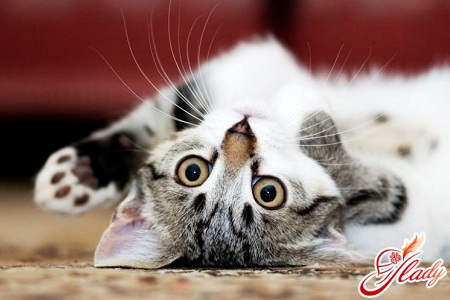
Ready feeds - pro and contra
Ready-to-eat cat food has its drawbacksand its advantages in comparison with natural food. We will not try to entice you into the camp of fans or opponents of ready-made food for animals, we will only note that low-quality and cheap food can also provoke various diseases. If you decide to feed your cat with ready-made dry or wet food, then do not save on its health. What food should you give preference to? It is best to opt for premium food. Yes, they are more expensive, but their quality is much better. By the way, there are also super-premium food. Such food should be fed only to those animals that are being prepared for exhibitions, since it is the food of this class that significantly improves the appearance of the cat. At the same time, super-premium food significantly burdens all the excretory systems of the cat's body, which can also provoke their diseases. The availability and cheapness of widely advertised ready-made cat food has one significant drawback. Their low price is not due to the best raw materials. Judge for yourself, dry or wet food packages indicate that they contain a certain amount of proteins, carbohydrates, minerals and vitamins. But what kind of proteins these are is rarely written. Very often, manufacturers use bone meal and even feathers as a source of animal protein for cheap food. But not meat. In addition, ready-made food contains flavor additives that are so attractive to cats that they can cause a real addiction in the animal. As a result, a cat that was fed dry food, like a drug addict, will refuse any other food and insistently demand ready-made food. Moreover, the addiction can be so strong that the animal will starve, but will not touch any other products. And the side effect of low-quality protein is urolithiasis, gastritis, dermatosis and a bunch of other diseases. And yet, ready-made pet food is very popular all over the world. No one will deny their positive quality in the form of a balance of all the substances necessary for a cat. Yes, it is. In addition to everything, feeding animals with ready-made dry or wet food is also very convenient. And yet, think carefully before transferring your cat to eating ready-made food. Would you yourself eat only canned food? Unlikely.
Helpful Tips
Of course, every owner should not only know what to feed their cat, but also how to do it correctly. Here are some useful tips on this topic:
- an adult healthy cat should be fed twice a day;
- kittens, pregnant and lactating cats need four or six meals a day;
- in the cat menu, the volume of liquid should be one and a half to three times the volume of solid food;
- regurgitation of undigested food - a signal about overeating, in this case it is necessary to limit the amount of food for the cat;
- clean water is a must and must always be available to the cat;
- bowls, from which the cat eats and drinks, should be so wide that the whiskers (vibrys) do not touch the edges of the dishes - many cats do not like it;
- the place of food intake should be as far as possible from the cat's toilet - the cats are squeamish and will not eat where they recover.
They say that a cat has nine lives.Even if this is so, one of them she lives next to you. And you are responsible for her. Therefore, knowing how to feed a cat correctly, try to make this her life the longest. And your love and care will definitely make the life of the cat in your house the happiest of all her nine lives. We recommend reading:




